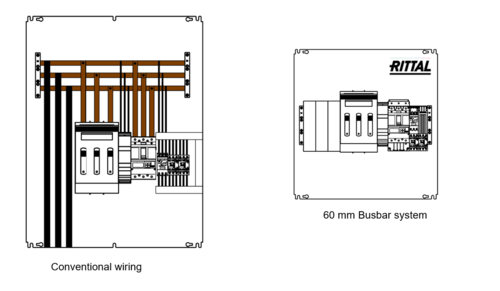

| Electrical installations |
|---|
| Wiring practice by region or country |
| Regulation of electrical installations |
| Cabling and accessories |
| Switching and protection devices |
|
|


Electrical busbar systems[1] (sometimes simply referred to as busbar systems) are a modular approach to electrical wiring, where instead of a standard cable wiring to every single electrical device, the electrical devices are mounted onto an adapter which is directly fitted to a current carrying busbar. This modular approach is used in distribution boards, automation panels and other kinds of installation in an electrical enclosure.[2]
Busbar systems are subject to safety standards for design and installation along with electrical enclosure according to IEC 61439-1 and vary between countries and regions.[3]

A busbar system usually contains couple of busbar holders, busbars, Adapters to mount devices, clamps either with protective covering or without covering to powerup or distribute the current from the busbar system & busbar mountable electrical devices.
Electrical busbar systems can be differentiated by the distance between center of each busbar and vary according to maximum current carrying capacity of the system which depends on IEC standards. commonly known busbar system types.[4]
Source:[5]